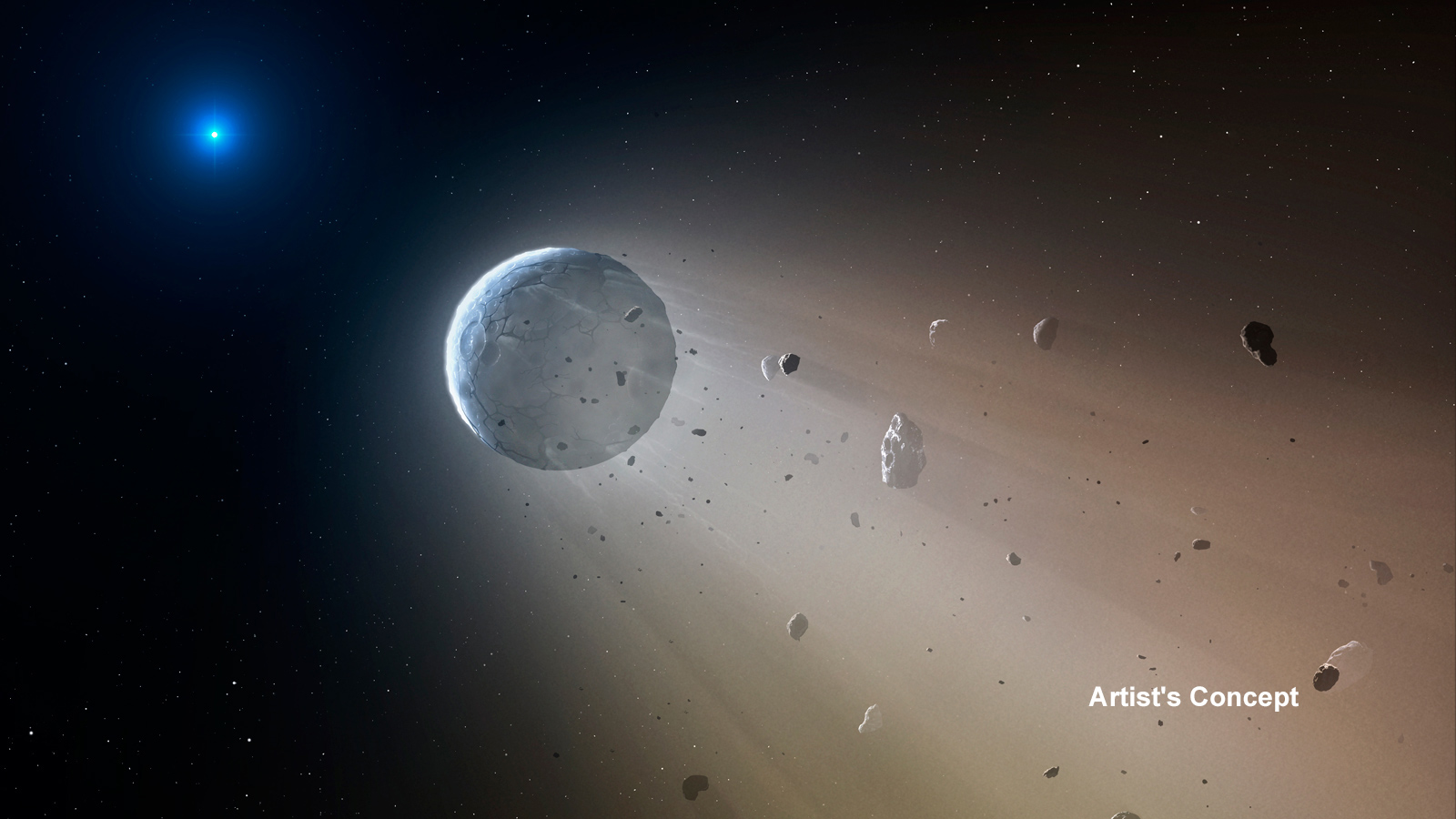Kepler confirms white dwarfs feed off remnant planets or planet-like bodies

A group of scientists led by Andrew Vanderburg has used the repurposed Kepler space telescope to record evidence of a small planetoid being disintegrated bit by bit as it revolves around a dense white dwarf star. The discovery validates the popular theory that white dwarfs with their dense gravity feed off planets or planet-like bodies which remain in their solar system.
"We are for the first time witnessing a miniature "planet" ripped apart by intense gravity, being vaporized by starlight and raining rocky material onto its star," said Andrew Vanderburg, graduate student at the Harvard-Smithsonian Center for Astrophysics in Cambridge, Massachusetts, and lead author of the new paper published in Nature on October 21, 2015.
As the age of a star accelerates, it initially turns into a huge red giant and then gradually loses half its mass to turn into an ultra dense white dwarf which is only 1/100 the size of the original star. The disintegrating planetoid revolves around white dwarf WD 1145+017 rapidly with one revolution being completed only in 4.5 hours. This exposes the planetoid to the white dwarf's high temperature and extremely high gravitation accelerating its disintegration. Additionally, this is the first recorded instance of a planetary body orbiting a white dwarf star.
NASA's K2 first started observing a patch of space in the constellation Virgo from May 30 to August 21, 2014. During its observations K2 picked up a distant white dwarf with a minor but recurring change in its brightness. From an astronomical point of view, this "blinking" effect indicates the presence of a planet or comet orbiting the star in question.
The research team led by Vanderburg found that the white dwarf's starlight was diminishing by 40% once every 4.5 hours indicating the presence of a small planet like body orbiting the white dwarf. However, the planet's transit signal was unlike the U-shaped symmetrical signal associated with planets but instead mimicked that of a comet's tail with an asymmetric elongated slope pattern. The scientists used these observations to infer that the planetoid orbiting the white dwarf was being "eaten up" by the star leading to a ring of dusty debris. The scientists also studied the star's atmospheric composition using the University of Arizona's MMT Observatory near Tucson and found heavier elements on the star's surface which theoretically confirmed their assumption of the planetoid being disintegrated by the white dwarf.
"The eureka moment of discovery came on the last night of observation with a sudden realization of what was going around the white dwarf. The shape and changing depth of the transit were undeniable signatures," said Vanderburg.

The diagram depicts a model of light curve shapes. The red line indicates the symmetric shape of a hypothetical Earth-size planet transit while the blue line is the asymmetric shape of the tiny disintegrating planet and its comet-like trailing dusty tail. The black dots are measurements recorded by the K2 mission of WD 1145+017. Image credit: CfA/A. Vanderburg
Due to their massive gravity, white dwarfs are supposed to have a surface which is relatively inert ie. only having light elements like helium and hydrogen. However, over the years,scientists have found that certain white dwarf stars have heavier elements like calcium, silicon, magnesium and iron present on their atmosphere. This had led to a theoretical assumption that the contamination with heavy elements was due to a small planet or asteroid being torn apart by the white dwarf's immense gravity. The current K2 discovery offers a clear validation of this theory.
“For the last decade we’ve suspected that white dwarf stars were feeding on the remains of rocky objects, and this result may be the smoking gun we’re looking for,” said Fergal Mullally, staff scientist of K2 at SETI and NASA’s Ames Research Center in Moffett Field, California. “However, there's still a lot more work to be done figuring out the history of this system.”
“This discovery highlights the power and serendipitous nature of K2. The science community has full access to K2 observations and is using these data to make a wide range of unique discoveries across the full range of astrophysics phenomena,” said Steve Howell, K2 project scientist at Ames.
References:
- "A disintegrating minor planet transiting a white dwarf" – Andrew Vanderburg et al. – October, 21 2015. Nature 526, 546-549; doi: 10.1038/nature15527
Featured image credit: CfA/Mark A. Garlick

Commenting rules and guidelines
We value the thoughts and opinions of our readers and welcome healthy discussions on our website. In order to maintain a respectful and positive community, we ask that all commenters follow these rules.